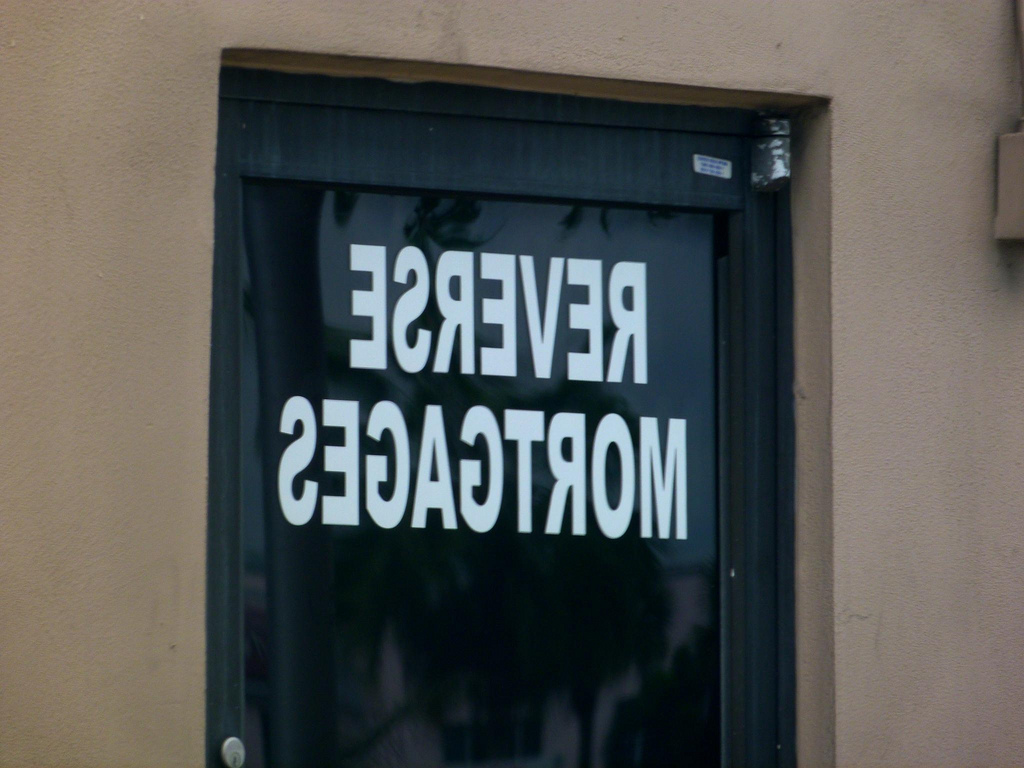Reverse Mortgages – Tool For Getting Out Of Debt, Or Recipe For More Trouble?
 Cash out your equity, get money to pay debts, and live happily ever after. Better watch out.
Cash out your equity, get money to pay debts, and live happily ever after. Better watch out.
Last week I spoke with a wonderful woman with $50,000 in credit card debt, medical debts approaching six figures, and no equity in her home. She’s retired, 74 years old, and looking to file for bankruptcy.
We talked about the debts, her assets and, ultimately, the mortgage. Turns out, this was no ordinary mortgage.
Rather, it was a reverse mortgage. And as the name implies, it had gotten her turned upside down.
Reverse Mortgage Basics
A reverse mortgage allows you to borrow against the value of your house, just like a regular mortgage.
The difference is that you don’t have to pay back any of the money until you die or the house is sold.
To qualify for a reverse mortgage, you must be at least 62 years old and live in the property as your primary residence. Any mortgage you have on the property must be paid off with the reverse mortgage proceeds, and the limit on the loan is $625,500 as of this writing in 2013.
There’s usually no minimum income or credit requirement to get a reverse mortgage because s because no payments are required on the mortgage.
How You Get The Money
Once you’re approved, you can choose to either get the money all at once as a lump sum, fixed monthly payments either for a set term or for as long as you live in the home, as a line of credit, or a combination of those options.
The choice is entirely yours, and most reverse mortgages will give you the option and freedom of choice.
Beware The Dangers Of Reverse Mortgages
It all sounds good on paper, especially if you’re strapped for cash. But a reverse mortgage isn’t all wine and roses.
First, realize that you’re probably going to be paying more in fees and interest. This loan isn’t based on your credit, after all; as such, it’s not too far off from those subprime loans that pose such a threat to homeowners.
In addition, the loan’s got to be paid off when you die – often in a short period of time. So if you’re thinking of leaving the house to your children or other heirs, this may pose a problem for them. They’ll need to either sell the house or scramble to get a mortgage to pay off the reverse mortgage. If they’ve got bad credit, this may prove to be difficult.
The Danger Of The Debt Spiral
My client at the beginning of this article came to me with medical debts and no equity in her home. She’d gotten over $250,000 in a lump-sum payment on the reverse mortgage but that was a few years ago – the money went to pay off her old debts.
Now the money was gone, she’d drained her equity and her ability to leave an inheritance, and she was up to her eyeballs in new debt.
There was nowhere for her to turn except bankruptcy.
This is the same problem many other people have when they refinance. The difference here is that my client was elderly and didn’t have the ability to refinance her existing loan again.
That’s not to say that a reverse mortgage is always a bad idea, however. If you can use the funds to get out of debt, understand the risks and costs, and remain debt free then it’s a viable option.
Be sure to remain vigilant and informed.
For more information and resources, check out the following:
- Top 10 Things To Know About Reverse Mortgages (HUD)
- Reverse Mortgages For Seniors (HUD)
- Reverse Mortgages (AARP)
- Reverse Mortgage Information (FTC)
Image credit: Rusty Clark
Reverse Mortgages – Tool For Getting Out Of Debt, Or Recipe For More Trouble? was originally published on Consumer Help Central. If you're seeing this message on another site, it has been stolen and is being used without permission. That's illegal, a violation of copyright, and just plain awful.

 Updated daily, this blog will keep you informed on the latest bankruptcy news!
Updated daily, this blog will keep you informed on the latest bankruptcy news!  Learn more about how Bankruptcy works and what you need to know.
Learn more about how Bankruptcy works and what you need to know.